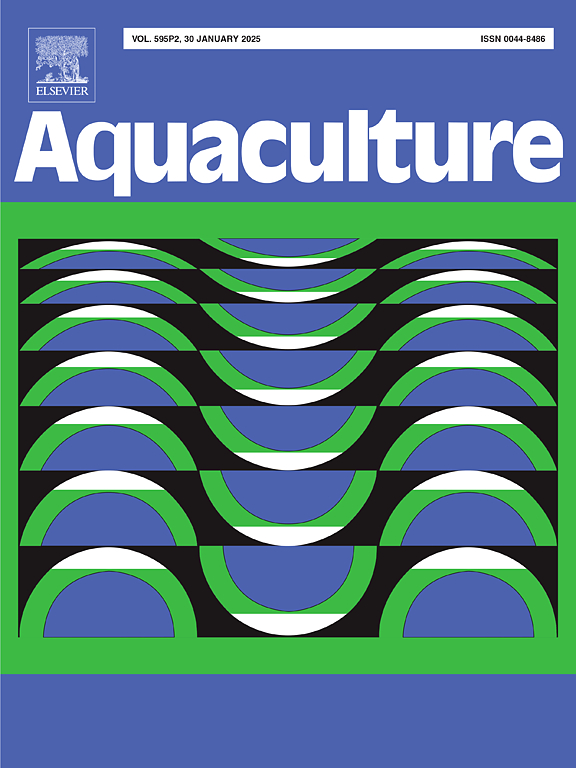Single-cell RNA sequencing reveals the heterogeneity of hepatopancreas cells and their association with gonadal development in the red swamp crayfish Procambarus clarkii
IF 3.9
1区 农林科学
Q1 FISHERIES
引用次数: 0
Abstract
The hepatopancreas plays a crucial role in synthesizing yolk substances during ovarian development in crustaceans, but the diverse types of hepatopancreas cells and their specific roles in ovarian development in Procambarus clarkii remain unclear. During ovarian development, the hepatopancreatic index increased from 6.5 % to 8.14 % between stages I and IV, then decreased to 4.35 % by stage VI. To reveal the heterogeneity of hepatopancreas cells and their association with ovarian development in P. clarkii, single-cell transcriptome sequencing was performed on the hepatopancreas from three distinct phases of ovarian development: the large growth phase (stage III), the mature phase (stage V), and the recovery phase (stage VI), analyzing a total of 16,626 cells. The cells were classified into five types: R-cells, E-cells, B-cells, F-cells, and M-cells. R-cells had the highest proportion (52.86 %), followed by E-cells (24.68 %). The proportion of R-cells varied from 65.10 % at stage III to 26.42 % at stage V, and 50.62 % at stage VI. Pseudo-time analysis indicated that E-cells were the first to differentiate, gradually giving rise to other cell types. Key pathways related to ovarian development were enriched in R- and E-cells, such as “oxidative phosphorythlation”, “protein processing in the endoplasmic reticulum” and “antigen processing and presentation”. By screening for differentially expressed genes within these pathways, potential functional marker genes linked to ovarian development in the hepatopancreas were identified and validated through qPCR, including Lysophosphatidylcholine Acyltransferase and Vitelline Membrane Outer Layer Protein I. These findings may provide insights into the molecular regulatory mechanisms governing ovarian development in crustaceans.

求助全文
约1分钟内获得全文
求助全文
来源期刊

Aquaculture
农林科学-海洋与淡水生物学
CiteScore
8.60
自引率
17.80%
发文量
1246
审稿时长
56 days
期刊介绍:
Aquaculture is an international journal for the exploration, improvement and management of all freshwater and marine food resources. It publishes novel and innovative research of world-wide interest on farming of aquatic organisms, which includes finfish, mollusks, crustaceans and aquatic plants for human consumption. Research on ornamentals is not a focus of the Journal. Aquaculture only publishes papers with a clear relevance to improving aquaculture practices or a potential application.
 求助内容:
求助内容: 应助结果提醒方式:
应助结果提醒方式:


